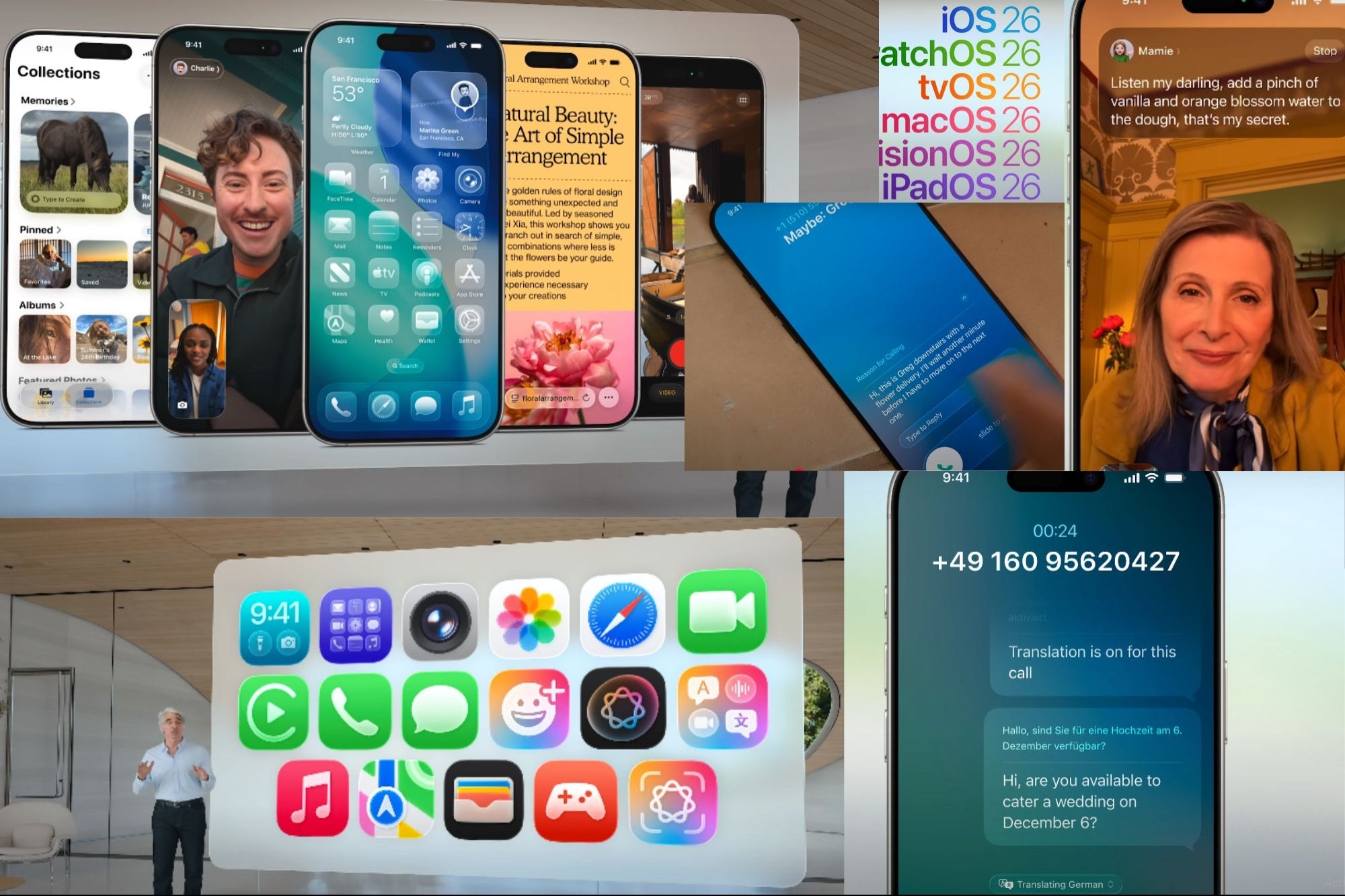From Devices to Intelligence: Apple Reinvents the User Experience at WWDC 2025 With over 1.14 billion smartphone users in India, and iPhones accounting for 4.1 per cent, Apple now has nearly 47 million users in the country
You're reading Entrepreneur India, an international franchise of Entrepreneur Media.

At this year's Worldwide Developers Conference, Apple didn't just unveil new features it offered a glimpse into how our relationship with everyday technology might change in the years ahead. While its physical expansion is happening on the ground in India, Apple's digital transformation is playing out globally and was on full display at WWDC 2025.
Craig Federighi, Apple's SVP of Software Engineering, introduced Apple Intelligence—Apple's new AI layer built to work privately and efficiently on your device. It can summarise your emails, write replies, find photos by description, and even create Genmoji (custom emojis from text prompts). More importantly, all this is processed on-device or via Apple's Private Cloud Compute, which means none of your personal data ever leaves your phone.
Apps like Kahoot will now be able to create custom quizzes from your notes. Even while offline, hiking apps like AllTrails can suggest routes based solely on a description you type. Also, all of this happens without compromising privacy. Apple says it's using what it calls "Private Cloud Compute". The promise is that data sent off-device will remain encrypted and inaccessible to anyone, even to Apple.
iOS 26 and the Liquid Glass
After more than a decade, Apple is revamping the way its software feels and looks. The introduction of Liquid Glass—a new visual material that reacts to touch, light, and context is part of a massive redesign across iPhone, iPad, Mac, and Vision Pro. The last time Apple did something this significant was with iOS 7 in 2013.
Lock screens now respond dynamically to your photos. App icons adapt to light and dark modes. The Camera app features a simpler interface, and Photos brings back tabs users missed. Safari, FaceTime, and Maps have all been reworked for a more immersive, fluid experience.
One of the most buzzed-about features is Live Translation, which lets users have real-time translated conversations across Messages, Phone, and FaceTime powered entirely by Apple's on-device models.
Apple also added smarter spam filters, voicemail summaries, and Hold Assist, which stays on hold for you and alerts you when a human picks up—arguably the most relatable tech update of the year.
AI in CarPlay
CarPlay is getting a design update too. Icons and menus now match the Liquid Glass aesthetic found on the iPhone. Widgets and Live Activities (like tracking a flight) have been added to the dashboard, making the interface more glanceable. For those using CarPlay Ultra which is available in newer cars, Apple is extending deeper integration, including access to in-car features like climate controls and the radio.
What stands out here isn't just the design consistency. It's that Apple seems to be quietly building toward a version of the car interface that's not just smart but fully Apple.
Music and Maps
Music, Maps, and Wallet also received updates many centred around usability. In Apple Music, lyrics translation and pronunciation tools make it easier to understand songs in other languages. A new AutoMix feature blends songs more smoothly, aimed at people who want a playlist to flow without interruptions.
Maps now remembers where you've been via a private log of Visited Places, and can suggest routes based on your routines.
VisionOS 26
Apple's Vision Pro headset, launched last year, is now receiving its biggest software upgrade yet with VisionOS 26. According to Mike Rockwell, Apple's VP of Vision Products, the update adds persistent spatial widgets, enhanced avatars (Personas), expanded enterprise tools, and immersive content support blending physical and digital environments more seamlessly than ever.
Widgets are now spatial, allowing users to pin clocks, weather, music, and photos directly into their surroundings. These elements remain in place across sessions and can be resized or restyled with adjustable width, depth, and colour. Developers can also create custom widgets for Vision Pro through the new Widgets app.
Spatial scenes previously introduced in iOS are now part of VisionOS, bringing 2D photos to life with AI-generated depth and perspective. These can be explored in Apple's new Spatial Gallery or within apps like Safari for a more immersive web browsing experience.
Personas—Apple's digital avatars for video calls are also being reworked with better skin tones, hair rendering, and facial detailing. With VisionOS 26, users can now share spatial experiences with others in the same room like watching a movie or playing games together while enterprise teams can collaborate on 3D models in real time.
On the enterprise front, shared device support is being introduced, allowing team members to quickly log into a Vision Pro using their iPhone. This enables seamless access to stored eye and hand tracking data, vision prescriptions, and accessibility settings. Apple also launched a Protected Content API, providing a secure, eyes-only viewing mode for sensitive business or medical information.
India's iPhone Surge
India's iPhone production crossed USD 22 billion last year. Analysts now expect the country to account for nearly 20 per cent of global iPhone production by the end of 2025.
Even as US President Donald Trump criticises Apple's pivot to India and urges a return to American manufacturing, the company has chosen to position itself in India.
Apple is not just manufacturing in India, it's thriving here. The company's India revenue rose 36 per cent to INR 67,122 crore (USD 8 billion) in FY 2023–24. Net profit jumped 23 per cent to INR 2,746 crore, according to data from Tofler.
For the first time, Apple broke into the top five smartphone brands by volume in India, with a 10 per cent market share during the October–December 2023 quarter, according to Counterpoint Research. iPhones once seen as aspirational luxury products are now being driven by financing options, premiumisation trends, and discounts on older models.
With over 1.14 billion smartphone users in India, and iPhones accounting for 4.1 per cent, Apple now has nearly 47 million users in the country.










